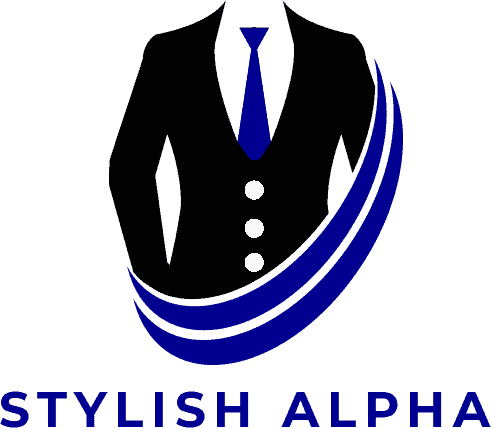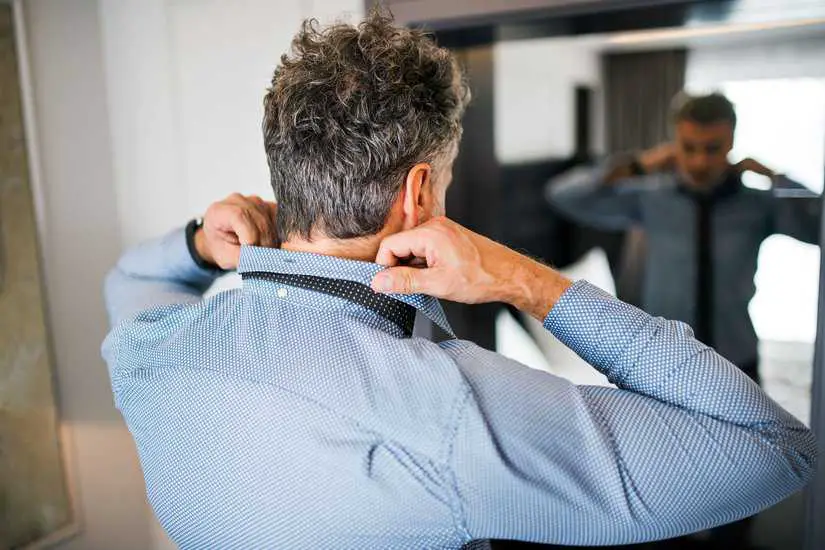The cutaway collar is a distinctive and bold choice in men’s fashion, known for its wide spread and ability to accommodate larger tie knots. Recognizing when to wear a cutaway collar is key to presenting oneself with sophistication and style.
This type of collar is typically seen on dress shirts and is regarded for its modern edge and sartorial flair. I have found that for formal events, a cutaway collar pairs elegantly with a tailored suit and tie, conveying a polished and refined look.

When considering incorporating a cutaway collar into your wardrobe, it’s important to address its versatility. The collar can transition from business meetings to social occasions seamlessly, making it a valuable addition to a modern gentleman’s collection.
Due to its wide opening, it allows for creative tie choices and can be accessorized with sophistication. Understanding the construction and proper care for a cutaway collar ensures that it retains its sharp appearance over time.
Key Takeaways
- The cutaway collar is a versatile choice suitable for various formal events.
- It is preferred for its modern aesthetic and compatibility with larger tie knots.
- Careful consideration should be given to maintaining the collar’s sharp appearance.
Also don’t miss:
- Button Down Collar vs. Spread Collar
- Are Button Down Collars Out of Style?
- What Collar Looks Best Without a Tie?
Evolution of Shirt Collars
Shirt collars have undergone significant transformations, reflecting shifts in fashion and functionality. My focus will be on the cutaway collar’s origins and the various styles that have defined eras.
History of the Cutaway Collar
The cutaway collar, also known as the spread collar, is distinguished by its wide separation, which allows for larger tie knots. This collar’s inception is tied to the desire for a modern and assertive look. Historically, the cutaway spread collar has been a staple in a gentleman’s wardrobe, signaling a keen fashion sense paired with an air of formality.
Collar Styles Through the Ages
- Early 19th Century: The advent of the collar can be traced back to detachable versions, which were a hallmark of men’s formal wear. These collars could be starched to a crisp appearance.
- Late 19th Century: The club collar, with its rounded points, emerged, reflecting the Eton College standard, hence its alternative name, the Eton collar.
- Early 20th Century: The American classic, button-down collar, was introduced by Brooks Brothers, revolutionizing the casual shirt by pinning the collar points down to the shirt front.
- Mid-20th Century: The point collar dominated the mainstream, offering a sharp and clean look by framing the tie with narrow collar points.
- Present Day: The band collar has gained popularity, providing a modern look that eschews traditional collars for a stand-up style.
Across eras, collar styles like the point collar, button-down, and cutaway have delineated the lines between casual and formal wear, always adapting to the prevailing norms and individual preferences regarding comfort, appearance, and occasion.
Anatomy of a Cutaway Collar
The cutaway collar distinguishes itself with features that set a fashion-forward tone in men’s dress shirts. Its distinctive look comes from a combination of wide collar spread and short collar points.
Defining Features
The key to identifying a cutaway collar is its almost horizontal collar points. Unlike more traditional collars, the cutaway—as the name suggests—cuts away drastically, revealing more of the upper shirt area. This attribute contributes to a modern and stylish aesthetic, making the dress shirt collar appear almost horizontal. It is unmistakable for its aggressive angle, which starts close to the collar band and extends outward.
Collar Points and Spread
The length of the collar points on a cutaway collar is typically shorter than those found on more conservative shirt collars. This format pairs exceptionally well with a spread collar, enhancing its visual impact.
Speaking in terms of collar spread, the wider collar of a cutaway design allows for larger tie knots, such as a full Windsor, to fit comfortably beneath the collar band without being cramped. This expansive spread not only accommodates hefty knots but also lends a touch of sophistication to the wearer’s ensemble.
Choosing the Right Tie
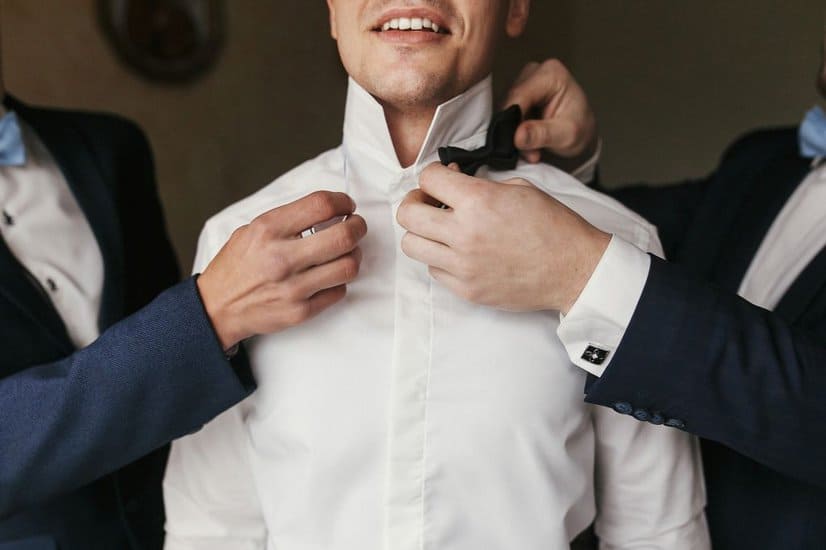
When selecting a tie for a cutaway collar, it is crucial to consider the knot that will best complement the spread and elegance of the collar. The right choices in neckwear elevate the look, ensuring a harmonious blend of style and sophistication.
Tie Knot Options for Cutaway Collars
- Windsor Knot: A full Windsor knot is a symmetrical, wide, and triangular choice that is ideally suited for a cutaway collar. Its size fills the wider space effectively.
- Half Windsor: For a slightly less formal look than the full Windsor, the half Windsor knot is smaller but still provides a clean, triangular shape.
- Four-in-Hand: Although less substantial, a Four-in-Hand knot suits the cutaway collar for more casual occasions, offering a long and slender appearance.
It’s important to match the formality of the tie knot with the setting. A full Windsor is more formal and suitable for business or ceremonial events, while the Four-in-Hand is a versatile choice for everyday wear.
Knot Size and Tie Width
- Knot Size: Cutaway collars are spread wide, so a larger knot, like a full or half Windsor, fills the gap nicely and balances the look.
- Tie Width: Along with knot size, consider the width of the tie. Wider ties generally accommodate larger knots better, while slimmer ties are more in proportion with the Four-in-Hand knot.
As I pair my ties with cutaway collars, I keep in mind that proportion is the key. A well-matched tie and knot not only complement my cutaway collar but also enhance my overall attire.
Occasions and Attire Pairing
When selecting a cutaway collar, I consider the type of event and the corresponding dress code. This distinctive collar style can be versatile, but it’s crucial to pair it appropriately with my outfit to maintain sartorial elegance in any setting.
Formal and Business Environments
In formal and business settings, the cutaway collar lends itself well to a sharply tailored suit or a blazer. For business meetings that necessitate a high degree of professionalism, I pair a classic cutaway collar shirt with a suit and tie.
This combination projects authority and refinement. In particularly high-stakes environments such as black tie events or weddings, coupling a cutaway collar shirt with a tuxedo ensures my attire meets expected standards of formality.
Casual and Relaxed Settings
For casual and relaxed occasions, the cutaway collar can be dressed down effectively. When aiming for a smart casual look, I might forgo the tie and wear the collar open with a blazer over jeans. This ensemble works equally well for a relaxed business lunch (business casual) or a weekend brunch.
It’s important to note that while the cutaway collar can adapt to less formal settings, opting for casual shirts with a softer fabric and a less rigid collar can help maintain the relaxed vibe without looking out of place.
Incorporating into the Modern Wardrobe
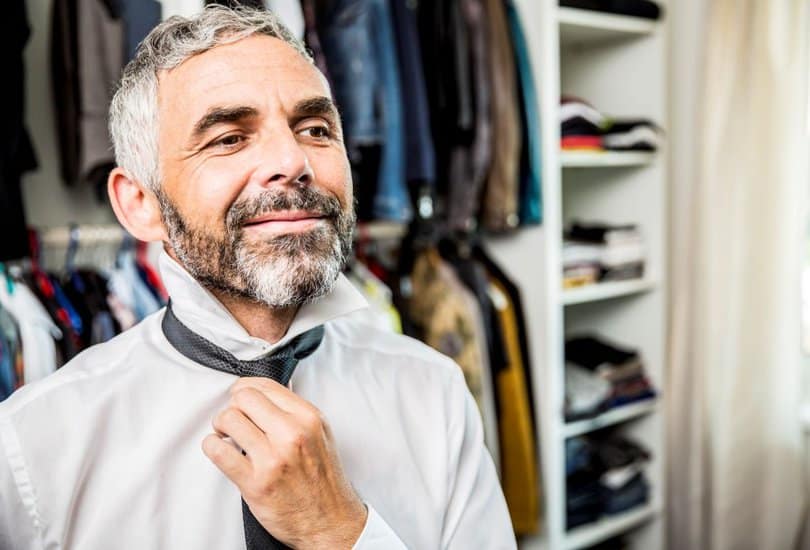
A cutaway collar is a versatile addition to my modern wardrobe, balancing both bold fashion statements and relaxed aesthetics. Here’s how I integrate it into my style effectively.
Versatility in Modern Fashion
I appreciate the cutaway collar for its versatility, seamlessly fitting into various settings, from business to casual. Modern fashion champions adaptability, and I make the most of a cutaway collar shirt by pairing it with suits for a sharp, sophisticated look or wearing it unbuttoned for a more relaxed vibe. For formal occasions, I choose a tie with a Windsor knot to complement the wide spread of the collar.
A Bold Statement in Men’s Fashion
Embracing the cutaway collar is a way for me to make a bold and confident statement in men’s fashion. This modern twist on classic style stands out without seeming overdone. For a preppy touch, I might combine the cutaway with a patterned or textured tie, ensuring my wardrobe is distinctly up-to-date.
Accessorizing the Cutaway Collar
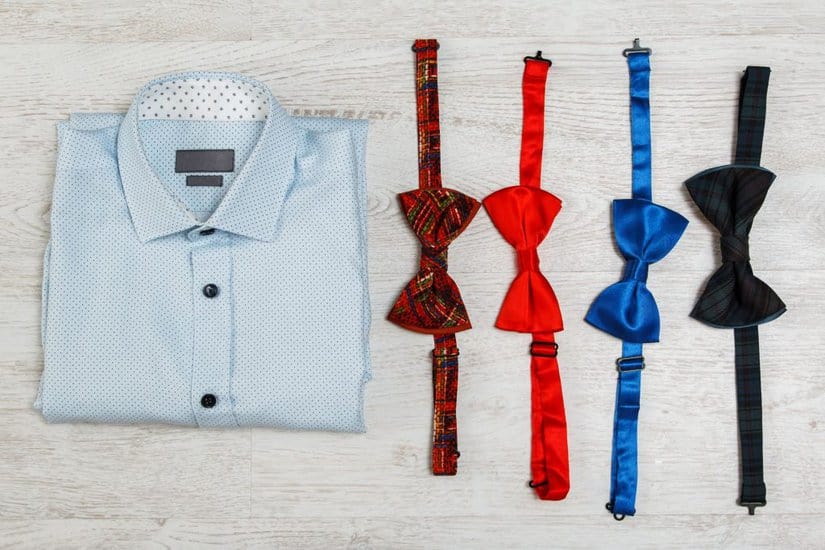
When I select accessories for a cutaway collar, I prioritize items that complement the wide, horizontal spread. The choice of tie knot and additional accessories such as collar pins or bars can enhance the distinguished look of this collar style.
Collar Bars, Pins, and Other Accessories
The wide angle of a cutaway collar makes it an excellent canvas for showcasing collar bars and pins. I prefer a collar pin for a more secure and defined arch in my tie, which also elevates the tie knot for a more pronounced effect.
A collar bar can add a touch of sophistication; I always ensure it’s of the proper length to span the collar without bunching. When using these, the tie knot becomes crucial; a Windsor knot or Pratt knot works well because they provide a symmetrical and substantial presence between the spread.
Accessories to consider with a cutaway collar:
- Collar bar: ensures a neat tie presentation
- Collar pin: elevates the tie knot
- Cufflinks: complements the shirt’s elegance
Lapel and Accessory Coordination
Coordinating my lapels with my neckwear and other accessories ensures a cohesive look. For instance, when I choose a bow tie with my cutaway collar, I ensure my lapels are on the narrower side to maintain balance. If I opt for a tie, I make certain the lapel width harmonizes with the tie’s scale and the overall silhouette.
Key points on coordinating lapels and accessories:
- Narrow lapels: pair well with bow ties
- Wider lapels: require a fuller tie knot like the Windsor
- Placket and cufflink selection should harmonize with the shirt’s formality
In accessorizing a cutaway collar, my focus remains on creating an intentional and striking appearance that respects the balance between the shirt’s features and the complementary pieces I choose.
Care and Maintenance of Collars
Properly caring for shirt collars is vital to ensure they look sharp and stand the test of time. I’ll guide you through cleaning methods and ironing techniques specifically suited for different shirt collar styles, as well as tips for storing collars to maximize their longevity.
Cleaning and Ironing Tips
When it comes to cleaning shirt collars, especially ones with a rigid structure like cutaway collars, it’s important to inspect the collar carefully before laundering. I always check the label for any specific instructions related to the collar style and fabric.
- Pre-treating stains: Gently apply a stain remover onto any soiled areas of the collar without rubbing too vigorously to avoid wearing down the fabric.
- Washing: I usually wash collars in warm water and select a gentle cycle to prevent excessive stress on their shapes.
- Drying: While many recommend air drying to maintain the collar’s integrity, if time constraints require machine drying, I opt for a low heat setting.
For ironing, I follow these steps:
- Preparation: I lay the collar flat and sprinkle it with water or use steam to dampen it slightly.
- Ironing: Using a medium-hot iron, I start from the outer edges and move toward the middle, carefully pressing down any folds or creases.
- Final touches: Once the base of the collar is crisp, I focus on the points, ensuring they are symmetrical and sharp.
Storage and Longevity
Storage plays a crucial role in the longevity of collar styles like the cutaway, which can lose their distinctive shape without proper care. Here’s how I approach storage:
- Hanging shirts: To prevent the collars from getting crushed, I hang my shirts, buttoning the top button to maintain collar shape.
- Use of collar stays: For collars that come with slots for collar stays, I make sure to insert rigid ones to help them hold their lines.
In terms of longevity, these additional measures help:
- Rotating shirts: I avoid wearing the same shirt in succession to allow the collar fabric to rest and recuperate.
- Correct tailoring: If the collar begins to lose its shape, a tailor might reinforce it with interfacing or other methods, prolonging its life.
Maintaining shirt collars doesn’t require extraordinary effort, but it does demand consistent care. By applying these cleaning, ironing, and storage techniques, I ensure my collars always present well and last longer.
Innovations in Collar Design
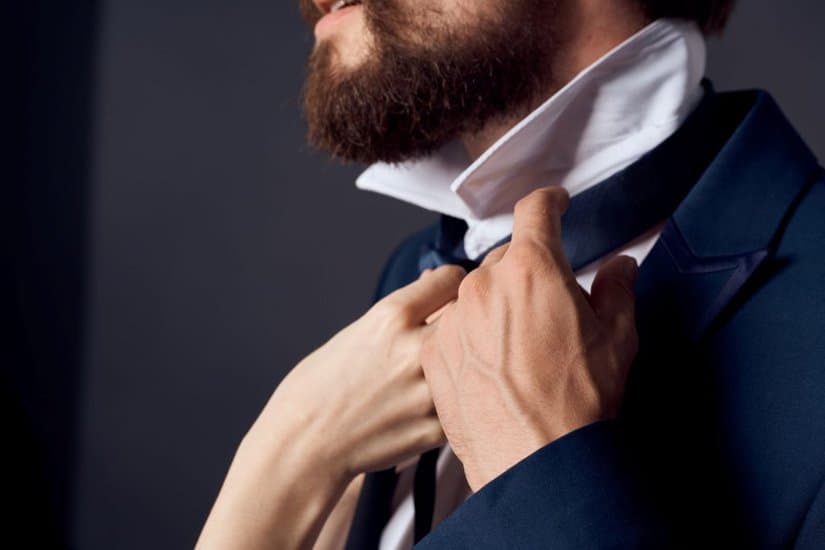
Collar design has undergone significant changes with technological innovations and shifting fashion trends, reflecting modern sensibilities and functionality in apparel.
Technological Advancements in Fabric
In my examination of collar trends, I’ve noticed a substantial emphasis on material enhancements. For instance, grandad collars and mandarin collars have benefitted from breathable fabrics that maintain their structure without stiffness. Moreover, the hidden button collar, a style often seen on dress shirts, utilizes innovative interlinings to keep the collar points neatly anchored without visible buttons.
Evolving Collar Fashions
Fashion trends substantially influence the design and popularity of various collar types. The cutaway collar, a symbol of sartorial elegance, has seen a resurgence for its compatibility with wider tie knots. Likewise, the button down collar remains a staple in casual wear, often featured in Hawaiian shirts and bowling shirts.
The camp collar, too, has gained traction in leisurewear for its laid-back, open-collar stance. Meanwhile, variations such as the winged collar and Eton collar cater to formal attire, aligning with a timeless aesthetic. The English spread collar, with its wider collar points, perfectly balances contemporary and classic style.
The Global Influence on Collar Styles
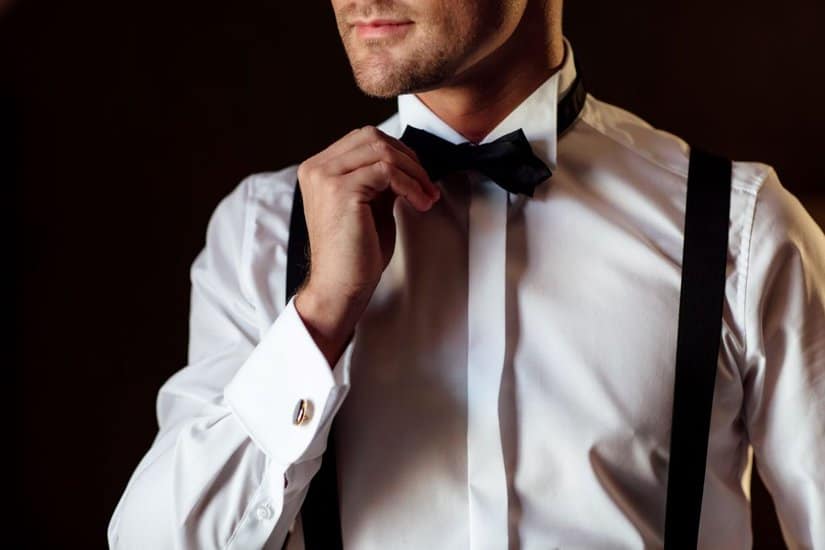
Collar styles have evolved through strong intercultural exchanges, reflecting shifts in fashion and functionality. I’ll explore how European tailoring shaped the quintessential collar designs and America’s own twist to this sartorial detail.
European Tailoring and the American Influence
In the landscape of men’s fashion, European tailoring has long been the standard-bearer. The English spread collar and the Eton collar, which originated at Eton College, epitomize the European approach to a structured and formal aesthetic. These styles, especially the English spread, have made their way across the Atlantic, influencing American fashion.
However, Americans have introduced a more relaxed approach. The button-down and the straight collar, while maintaining formality, offer a flexibility that caters to the versatility of American lifestyle. This amalgamation of European sophistication and American practicality laid the groundwork for what we see in modern attire.
Collar Variations Across Cultures
It’s evident that different cultures have embraced and modified classic European designs to suit local tastes and climates. For example, the Cuban collar is a testament to adaptation with its open and notched design, perfect for the heat of its Caribbean climate. This style, while a departure from traditional European forms, has been globally recognized as a casual fashion piece.
Moreover, collar styles serve not just as a functional aspect of clothing but also convey societal and cultural identities. In the realm of fashion, it becomes clear that while the roots may be European, the growth and evolution of collar styles are genuinely international.
Frequently Asked Questions

In this section, I cover some of the most common inquiries about cutaway collars, focusing on when and how they’re best worn, their unique style, and compatibility with different facial shapes and attire.
What occasions are most appropriate for wearing a cutaway collar shirt?
Cutaway collars are ideal for formal events and business settings where a sophisticated and contemporary look is desired. Their elegance pairs well with a well-tailored suit and can balance out the formality, making them a stellar choice for weddings or crucial business meetings.
What are the distinctive features of a cutaway collar compared to a classic collar?
The cutaway collar is characterized by its wide spread where the collar points angle outwards instead of pointing down. This style creates more space for larger tie knots, distinguishing it from the more traditional narrow spread of classic collars.
Is it fashionable to wear a cutaway collar without a tie?
A cutaway collar can definitely be worn without a tie, making for a sharp, modern ensemble. This look is particularly relevant in casual business contexts or social settings where you want to maintain a smart profile without being overly formal.
How does a bow tie complement a cutaway collar?
A bow tie goes hand in hand with a cutaway collar when aiming for a statement look. The wide collar spread perfectly frames the bow tie, enhancing its visibility and impact—ideal for special occasions where you want to stand out.
Which facial shapes are most flattered by a cutaway collar?
My observation is that cutaway collars tend to complement men with narrow or oval-shaped faces, as the wide collar spread can balance the facial proportions. However, it’s a versatile style that can also suit a variety of other face shapes when worn correctly.
Can you provide insights into the historical popularity of cutaway collars?
Cutaway collars gained popularity as a bold and fashion-forward choice in the 1930s. Their ability to convey a sense of sartorial prowess without appearing outdated has led to their enduring appeal in men’s fashion through the decades.

Samoel Ovanessian is the founder and creator of StylishAlpha.com – a website dedicated to men’s fashion. As a proud owner of more than 200 ties, he loves digging through new clothing combinations for everyday use, formal events and even just for fun. You can read more about Samoel here.
